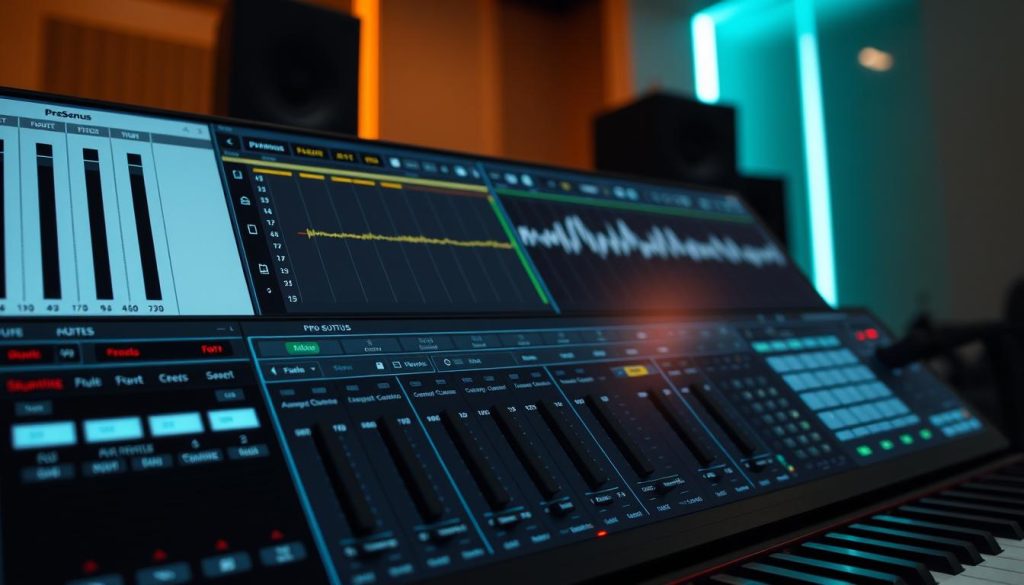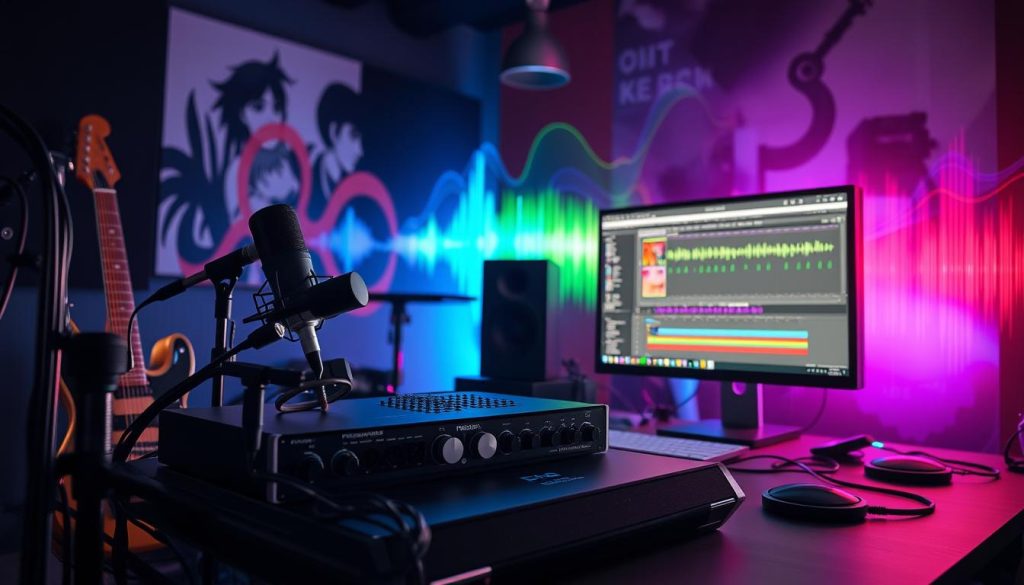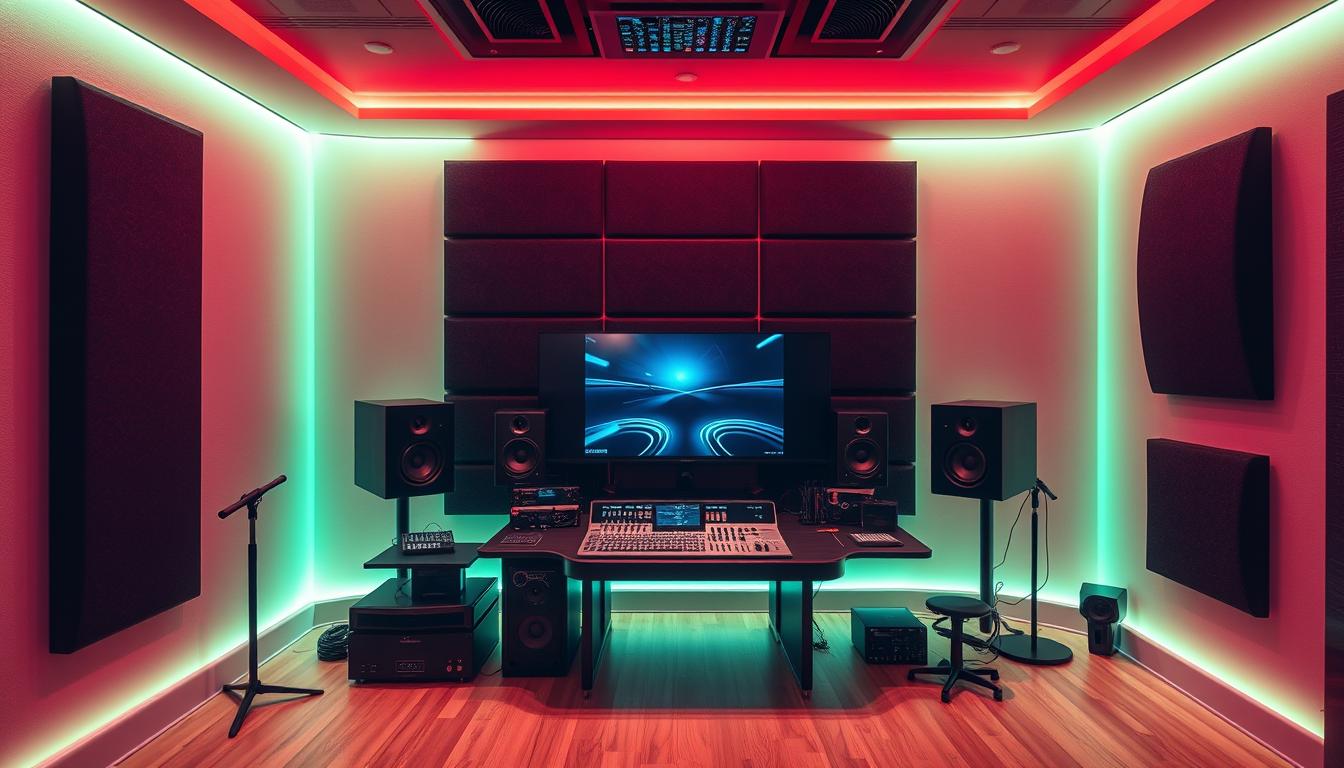I’m excited to share my expert tips for PreSonus sound engineering. This guide will cover everything from the basics of Studio One to using PreSonus gear for your projects. It’s for both beginners and pros. You’ll learn how to make your studio better, work more efficiently, and improve your music.
Mastering the Fundamentals of Studio One
I’ve worked with many digital audio workstations (DAWs), but PreSonus Studio One is a standout. It’s an all-in-one tool that makes music production easy. It’s great for both new and experienced music producers.
An All-in-One Powerhouse
PreSonus Studio One is unique because it does everything you need in one place. You can write songs, record, mix, and master music all in one interface. This means you don’t have to switch apps often, keeping your creative flow smooth.
Drag-and-Drop Functionality
Music production is all about being efficient, and PreSonus Studio One gets it. With a simple drag and drop, you can arrange tracks and add effects easily. This lets you focus on making music, not on complicated steps.
Customizable Workflow
Everyone works differently, and PreSonus Studio One knows this. You can change how your workspace looks and pick the tools you like. This makes the software work for you, making your creative process better.
PreSonus Studio One is perfect for anyone making music. It has a smooth workflow, easy drag-and-drop, and can be customized. This makes it a top choice for music creation.
Optimizing Audio Settings for Flawless Recording

As a PreSonus fan, I’ve learned that perfect recording results come from fine-tuning your audio settings. Studio One’s low-latency monitoring is a big plus for those using virtual instruments or tracking live. It changes the game.
Low-Latency Monitoring
Low-latency monitoring is key for a natural feel when playing. With PreSonus, you can cut down the delay between your instrument and the recording. This makes playing and recording smooth and precise.
This is super useful with virtual synths, drum modules, or recording live. It stops the annoying lag that can slow down your creativity.
Dropout Protection
PreSonus also has a dropout protection feature. It keeps your recording quality high, even when your system is busy. With these settings, you can work smoothly without worrying about technical problems.
Getting the most out of PreSonus’s audio settings means better recordings and easier work. Using low-latency monitoring and dropout protection boosts your production quality. It lets you bring your music to life with great precision.
Unleashing the Power of PreSonus Sound Engineering

As a sound engineer, I’ve found PreSonus to be a big change. It makes my work easier and helps me be more creative. With Studio One’s easy features, I can do more work and spend more time making music.
Streamlining Your Workflow
PreSonus makes my work simpler. Studio One lets me move easily between tasks like recording, editing, mixing, and mastering. I don’t have to switch apps, which saves time and keeps me creative.
Harnessing Drag-and-Drop
PreSonus’s drag-and-drop feature is great. It makes things like arranging tracks and adding plugins easy. This ease lets me focus on making music, not getting stuck on tech stuff.
Using PreSonus has made me more productive and creative. It’s all about easy use, drag-and-drop, and being able to customize. This has changed how I do sound engineering for the better.
Crafting Engaging Lessons with PreSonus
As an educator, my goal is to inspire and empower my students with music. I’ve found PreSonus to be amazing for this. It’s a suite of gear and software that changes how I plan lessons and make content.
PreSonus has many tools for teaching. These tools help me make lessons that are fun and effective. The Studio One digital audio workstation and AudioBox interfaces are key parts of my music education tools.
Unleashing Student Creativity with Drag-and-Drop Functionality
PreSonus is great because of its easy drag-and-drop feature. This lets my students try out different sounds, ideas, and effects easily. It makes learning interactive and hands-on.
- Helps students find their musical talents
- Makes them more involved in learning
- Allows them to work on projects they like
Customizable Interfaces for Personalized Lessons
PreSonus interfaces can be customized, which has changed my teaching. I can adjust the software and hardware to fit what my students need. This makes learning personal and fun.
| Feature | Benefit |
|---|---|
| Customizable Workspaces | Helps students work better and focus |
| Intuitive Control Layouts | Makes learning hands-on and fun |
| Detailed Metering and Monitoring | Improves students’ listening skills and audio knowledge |
Using PreSonus, I’ve made music education engaging, interactive, and personal for my students. My classroom is full of inspired learners. They’re ready to explore their musical interests and grow creatively.
PreSonus Sound Engineering on the Field
I love being a sound engineer and I’ve seen PreSonus go beyond the studio. They’re changing live performances, especially for drum corps and marching bands.
Take the Phantom Regiment, for example. This famous group uses PreSonus gear for amazing shows. They mix PreSonus microphones with their sound systems for top quality sound. It shows how PreSonus is key to live sound engineering’s future.
Watching the Phantom Regiment, I saw how PreSonus improves live sound. The sound is clear, from the brass to the drums. This proves PreSonus’ dedication to great audio in tough live settings.

